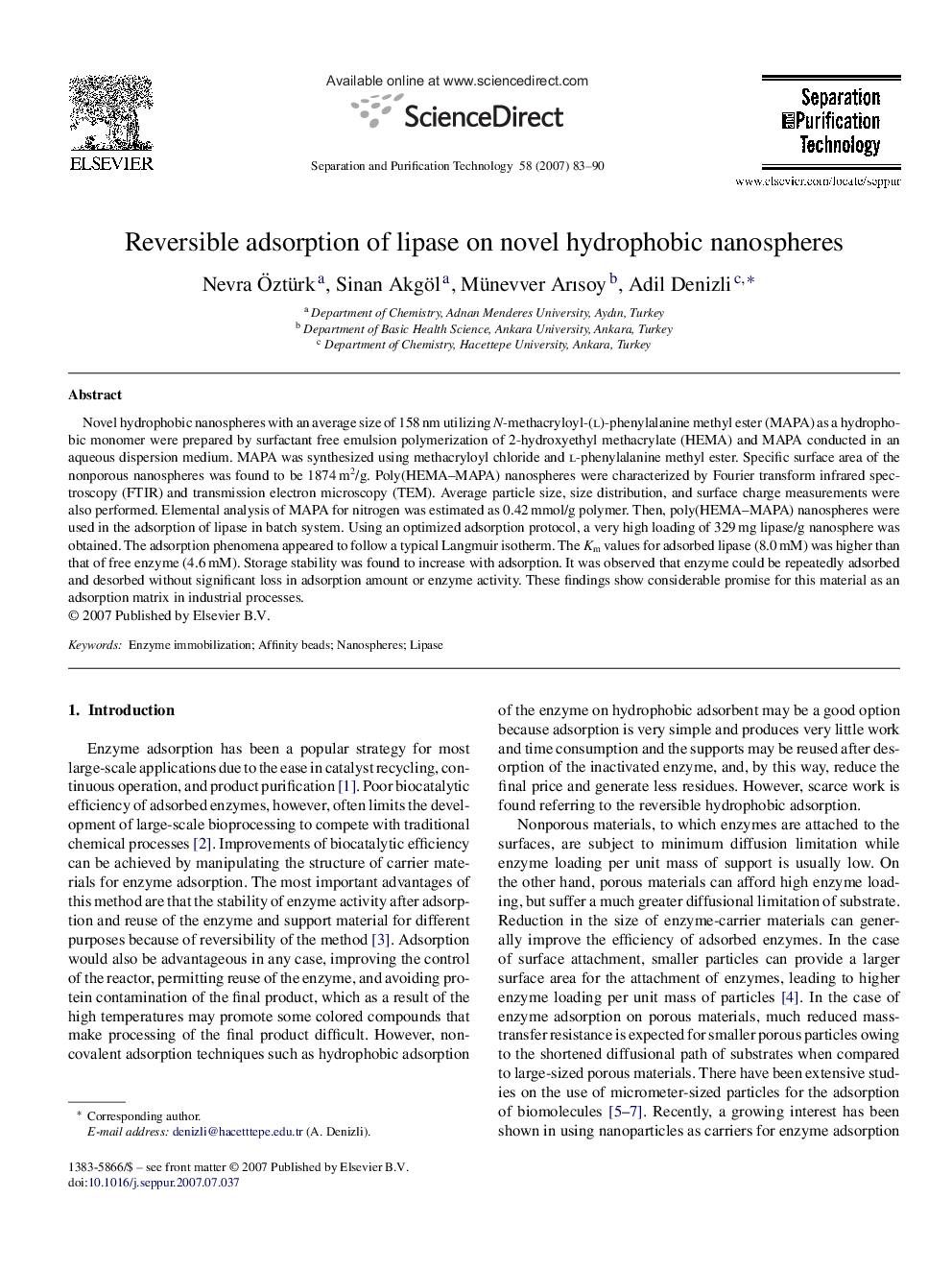| Article ID | Journal | Published Year | Pages | File Type |
|---|---|---|---|---|
| 643787 | Separation and Purification Technology | 2007 | 8 Pages |
Novel hydrophobic nanospheres with an average size of 158 nm utilizing N-methacryloyl-(l)-phenylalanine methyl ester (MAPA) as a hydrophobic monomer were prepared by surfactant free emulsion polymerization of 2-hydroxyethyl methacrylate (HEMA) and MAPA conducted in an aqueous dispersion medium. MAPA was synthesized using methacryloyl chloride and l-phenylalanine methyl ester. Specific surface area of the nonporous nanospheres was found to be 1874 m2/g. Poly(HEMA–MAPA) nanospheres were characterized by Fourier transform infrared spectroscopy (FTIR) and transmission electron microscopy (TEM). Average particle size, size distribution, and surface charge measurements were also performed. Elemental analysis of MAPA for nitrogen was estimated as 0.42 mmol/g polymer. Then, poly(HEMA–MAPA) nanospheres were used in the adsorption of lipase in batch system. Using an optimized adsorption protocol, a very high loading of 329 mg lipase/g nanosphere was obtained. The adsorption phenomena appeared to follow a typical Langmuir isotherm. The Km values for adsorbed lipase (8.0 mM) was higher than that of free enzyme (4.6 mM). Storage stability was found to increase with adsorption. It was observed that enzyme could be repeatedly adsorbed and desorbed without significant loss in adsorption amount or enzyme activity. These findings show considerable promise for this material as an adsorption matrix in industrial processes.
